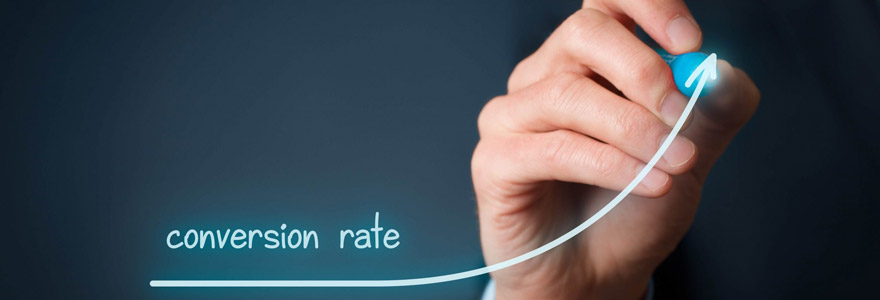
Conversion rate is the basic measurement of one’s performance in marketing campaigns. To put it into perspective, the conversion rate is the percentage of visitors that visit a website’s landing page and then convert into customers, buying whatever is being sold on the site.
Generally, for every 100 visitors to a site, only two of them usually convert into customers. That might sound like a small number, given that it is only 2%, but some sites have a conversion rate of only 0.1%, meaning it takes up to 1000 visitors to get only one customer.
While a natural referencing strategy can help improve your website positioning, having many visitors does not necessarily guarantee better sales.
Luckily, you can do a few things to improve your conversion rate. You can do them yourself or hire a French marketing agency to help you because it is not always easy to increase the conversion rate.
A marketing agency has experts to conduct a search engine optimisation audit and SEO referencing, and they use powerful internet tools such as an open site explorer and web editor. That said, here are a few effective strategies that could help you improve your conversion rate:
Optimise layouts of critical pages
Before you start looking for solutions, you must be sure that your conversion rate is actually low and something needs to be done.
Collect your traffic data, details of user behaviour on landing pages, bounce rates, click-through rates of ads, and information on returning customers, among other details.
Analyse the data and if the conversion rate is low, begin by optimising the layouts of your critical pages, such as the landing the page.
The first thing you might want to consider doing to your critical pages is altering their design to fit your analyses from the data you collected.
Use tools like scroll maps, mouse tracking, and eye-tracking to understand what your visitors want your website to look like so you can redesign it to meet their requirements. Create a page that your visitors will be happy to engage with at any time.
Add testimonials, logos and reviews
Generally, no one wants to buy something online if they are the first to buy it. You’ve purchased something online yourself, and chances are, you read reviews from other customers before deciding to settle for it.
So, if you want a product to have testimonials before purchasing it, why don’t you put your customers at ease by providing them with reviews and testimonials from past customers?
Adding credible logos on your website also increases the trustworthiness of your website. For example, you could add logos of companies that trust you to sell their things, such as Dell and HP and logos of companies they can use to transact with you, such as MasterCard, Visa, and PayPal. Make sure that every critical page on your site has logos, testimonials, and reviews.
The social proof and trustworthiness of a site keeps customers at ease and help them want to buy from the site even more. Also, make sure that your site’s trust flow is high by providing quality backlinks on your site.
Backlinks can help your visitors learn more about the products they want to purchase, helping them make an even more informed decision. This can make them trust your website even more.
Avoid Distractions on Your Website
Generally, no one wants a website that pulls them into too many directions before they get to where they want to land on the site. That’s why your landing page should be straightforward to navigate.
The rule of thumb should be, if something is not vital, it should not be included on the landing page. Just stick with what visitors of the website needs to know and avoid anything else. For the best results, ensure that your website includes:
• A headline and subheadings.
• The features of the products.
• Benefits of the products.
• Testimonials from past buyers.
• Reviews section.
• Visuals that help explain your offerings.
However, you may want to add other things such as social proof, videos, and a chatbox. If you have to, make sure they are below the page, and they are not a distraction to your visitors.
Strengthen Your CTAs
Call to action is vital during the marketing and can help improve your conversion rate if you place yours the right way. Generally, generic CTAs such as Sign Up and Start Free Trial is running out of fashion.
You could spend a few hours strengthening your CTAs to make them more psychologically appealing and improve your conversion rate. For example, starting your CTA with the word “Yes” paints a positive light on your CTA and makes one want to try it out. Therefore, instead of using the CTA, “get a free discount here,” you could use a CTA such as “Yes, I want my discount.” Such a CTA works much better.